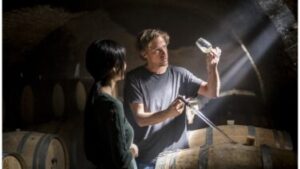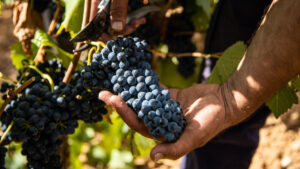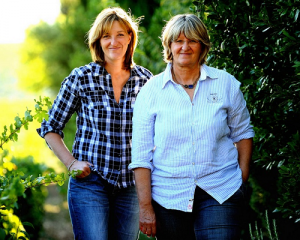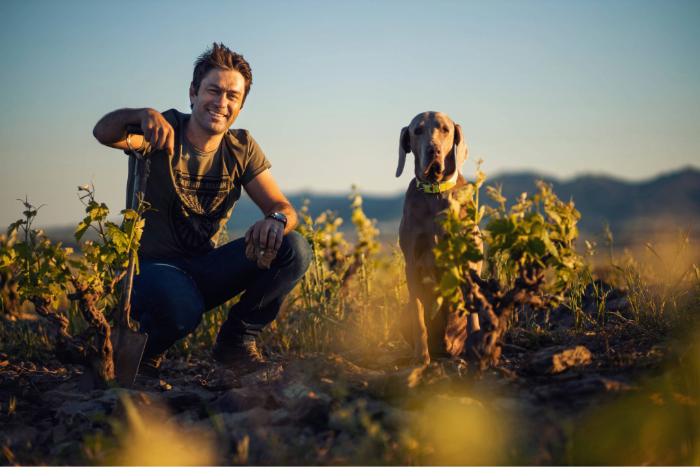
In 2017, Jean Smit teamed up with David Curl to create Damascene with the aim of showcasing the beauty and diversity that can be found in South Africa and the wines crafted from its terroirs. The country itself has the most diverse soil types in the world, and Jean crafts wines which show off how grape varieties grown on these various soils can bring something different to the table.
A lightbulb moment
Jean Smit is no stranger to the vineyard. He spent time working in Russian River and later, in Côte Rôtie alongside Stéphane Ogier where he learnt how to reveal all the secrets that the Syrah grapes hold. In South Africa, Jean experienced life at the Stellenbosch estate Rustenberg, before moving on to Boekenhoutskloof, one of the country’s famed wineries. His work here took him all over the Western Cape, from the coast to the mountains.
It was in one of the region’s vineyards that Jean had his lightbulb moment, his Damascene epiphany. Standing among the vines in the mountains, he realised that there was much more diversity that could be shown in South African wines, and he set out to shine a light on this with the help of the country’s most dramatic vineyards. And thus, Damascene was born.
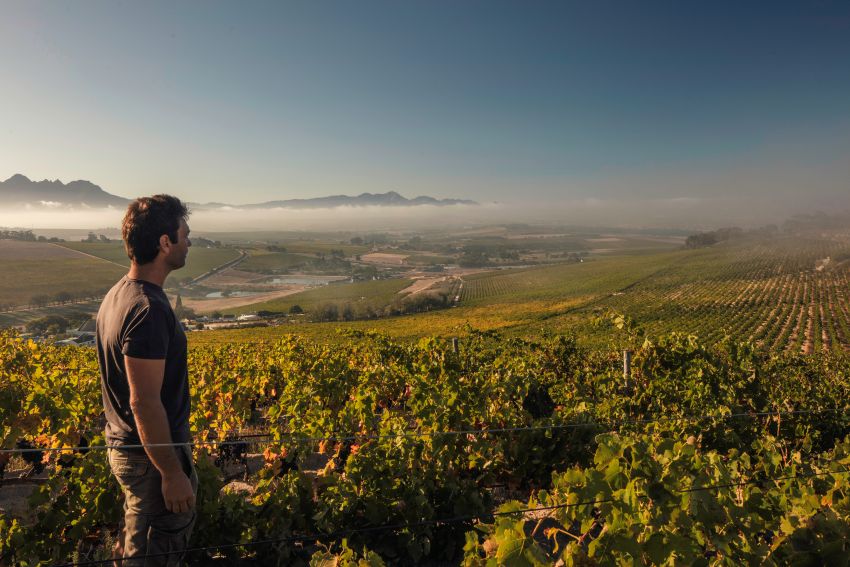
Collaboration is key
Jean Smit and David Curl, who also work together at David’s Elgin apple farm to create Moya Meaker wines, launched Damascene in 2017. The estate uses grapes from unforgettable vineyards in Stellenbosch, Swartland, Franschhoek, and Ceres Plateau, which it has under long-term purchase agreements to ensure fruit security. They plant the next block above the youngest vines to guarantee continuity for the years to come.
Jean works with local farmers who are a font of all knowledge about the specific nature of each plot. For example, in 2023, the Cape Doctor blew winds of 150km/h through the vineyards and the precious information of how to cope with this wind speed had been passed from generation to generation among the farmers. Crafting wine from vineyards with such climatic conditions and altitudes is a team effort, with the winery’s team working alongside other farmers to share knowledge between each other.
Joy in diversity
Damascene’s wines take people on a journey around South Africa. From the heights of Ceres Plateau to the hillsides of Stellenbosch, the estate producers extremely expressive wines which reflect where they come from.
For example, Syrah wines are produced from vineyards in Stellenbosch, Swartland, and Ceres Plateau, yet they are uniquely different. Those from Stellenbosch, which are made using 75% whole bunches, are overflowing with spice, red plum and cherry flavours carried on tidy tannins. Meanwhile, those from Ceres Plateau, which is 1,100 metres above sea level and sees the country’s first snow, contain more spiced aromas and concentrated black fruit. It’s crafted in a way similar to how you would Pinot Noir in terms of extraction. 60% of the grapes are kept as whole bunches and the cap is submerged during the winemaking process.
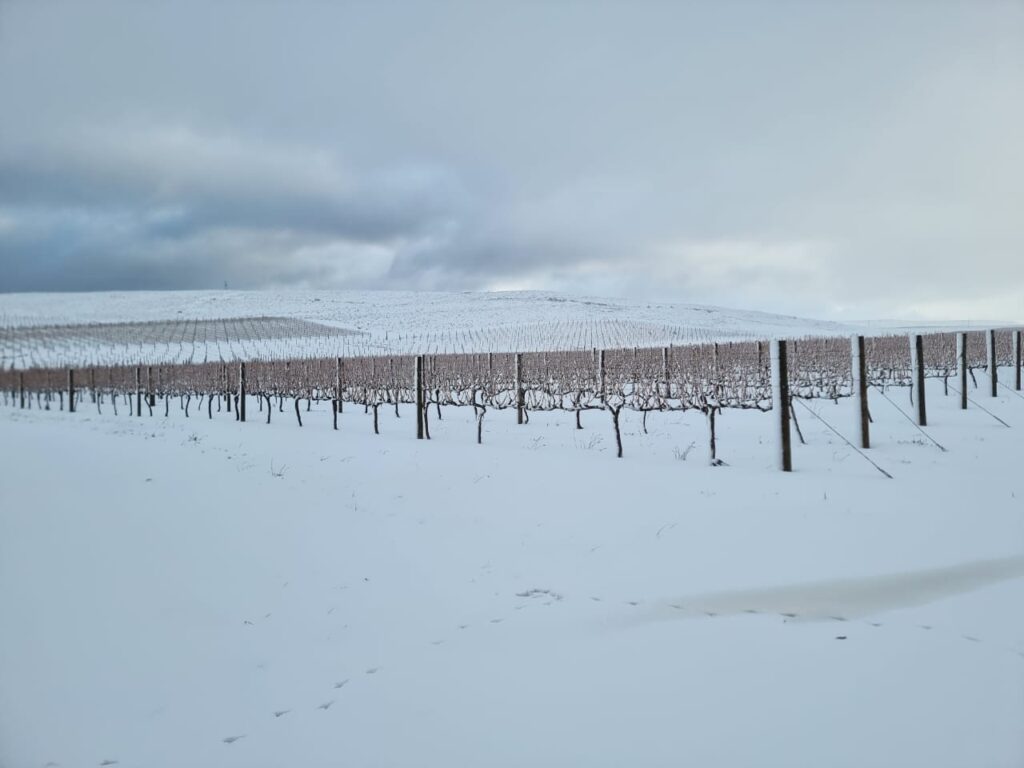
Elsewhere, Swartland and Stellenbosch Chenin Blanc show off the two sides to this grape variety. The Swartland wine is mineral, with mandarin and nectarine flavours on the palate. While the Stellenbosch Chenin is rich and full of butter toffee, white peach and apple flavours.
Sémillon used to cover 94% of South African vineyards and Damascene crafts a wine with grapes from Franschhoek, the home of this variety in the country. The vines were planted in 1932 and around 15% of them have naturally mutated to become Sémillon Gris. They produce a wine that is citrusy and floral with white peach notes and a delightful mouthfeel.
The estate’s Cabernet Franc comes from two hills in Stellenbosch with granite soil. The morning sun bathes the grapes in sunlight, and the berries are picked when ripe after a long hang time. No whole bunches are used in the winemaking process with all the grip in the wine coming purely from the grape tannins. The wine’s bouquet is full of red fruits along with fennel, thyme and floral notes.
The Stellenbosch Cabernet Sauvignon is the only wine from the estate to be bottled in a Bordeaux-shaped bottle, and it can stand its ground against other wines from this variety made in the traditional style. Bursting with blackcurrant and blueberry notes, a touch of spice warms the palate too. The estate modifies its winemaking process for this wine, placing it in barrique barrels for the first year of its life to impart the spice of oak before moving it into the 2,000-litre barrels used for the other wines for a further year to retain its purity as it continues to mature.
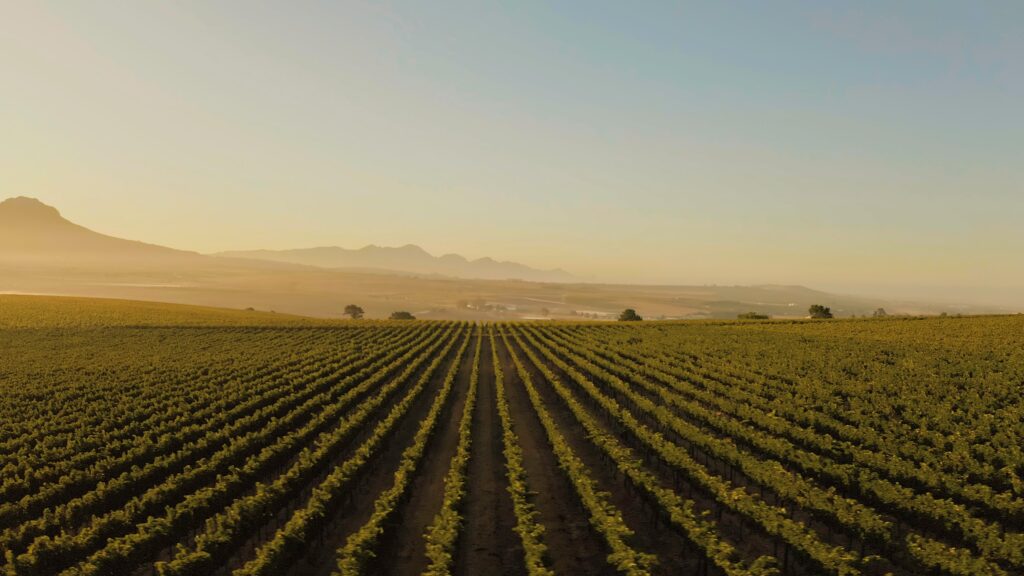
Nature at its best
Damascene’s vineyards are dotted around South Africa in the most breath-taking landscapes. This spreads the risk should something happen in one of the plots, such as a hailstorm, although it does cause Jean to travel over 40,000km a year visiting each of them. These are very marginal sites where there is a mixture of high wind, high altitude, and poor soil; some also have ocean influences. They are tended to in a sustainable manner, only using what is absolutely necessary. Due to the high winds, there is less need for spraying against diseases as the risk isn’t as great as in sites with little wind. The estate creates its own mulch which is reserved for the vines.
Jean recalls standing in every single one of the estate’s high-altitude vineyards and seeing birds of prey gliding majestically on the wind, highlighting the air flow at these heights. The rocky soils found at the top of the hills and mountains brings more structure to the wines, which is balanced by their acidity. Growing at the tops of the hills, the grapes enjoy plenty of sunlight, allowing them to reach optimal ripeness. Up here, there is less vintage variation, meaning that Damascene is well set to handle the years to come, no matter what the weather throws at it.
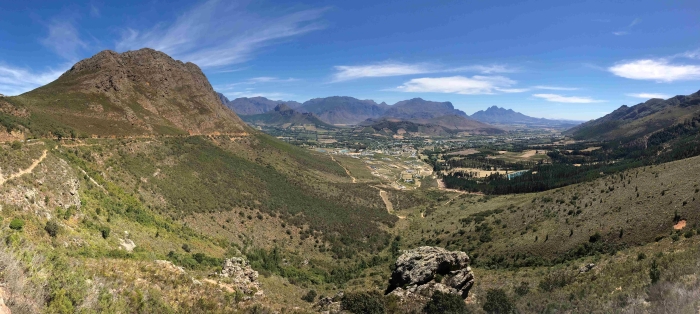
Work in the winery
Following Damascene’s first harvest in 2018, its brand-new cellar was built in 2019. No commercial yeast is brought into the cellar, instead Jean uses the natural yeast found on the grape skins to ferment the wine.
When the grapes arrive at the winery, they are placed in a cold room of 5˚C and the next day, they are moved into the concrete vats where fermentation starts spontaneously thanks to the yeast on the grape skins. Once ready, the wines are placed in large Austrian oak barrels (foudres) for maturation, where they stay for ten to 11 months. The wine is blended in December in concrete vats and bottled just after Christmas.
20% of the work in the winery is experimental as Jean wants to make sure he is releasing the vineyard’s full potential. This also allows him to continue learning, perfecting the craft he has dedicated his life to.
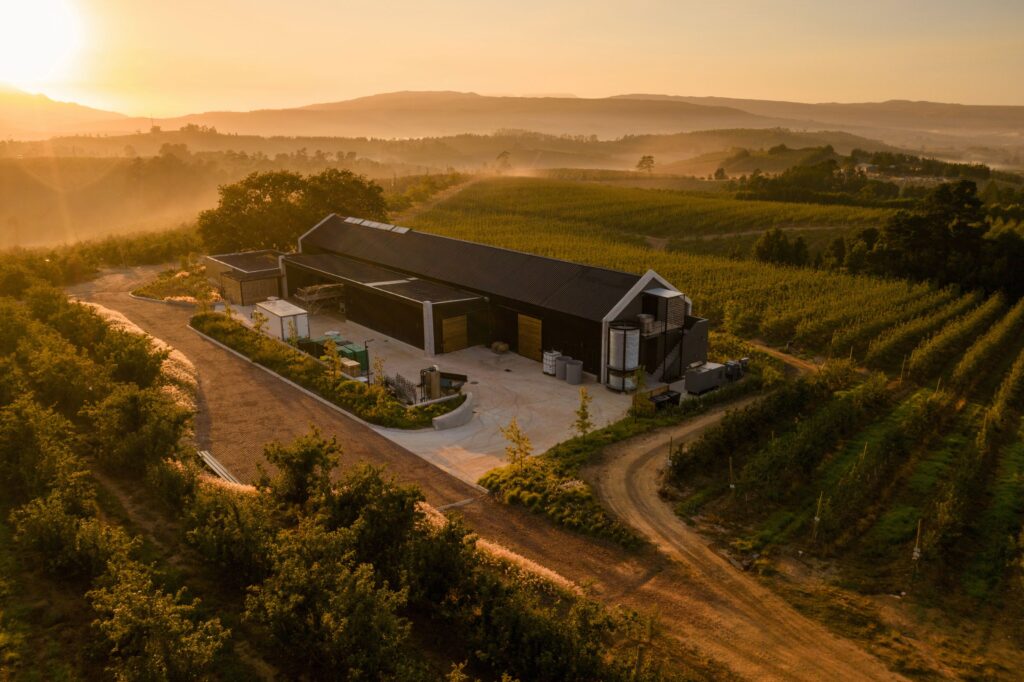
Red wine
The estate’s red wines ferment slowly at low temperatures to bring out their floral and spiced aromas, leaving the fruit to take the backseat. The work in the winery is gentle as Jean does not wish to extract too much of the high tannins found in the grapes, which are a consequence of the struggle the vines go through on these marginal sites. Because of the tannins, the wine is only pumped over, which aerates the cap, conserving the wine’s purity. Once the wine is ready, it is aged in 2,000-litre Austrian oak foudres to capture all the wine’s qualities and to ensure the vineyard’s work is not masked.
White wine
The white grapes are pressed in the winery and ferment at slightly higher temperatures. This helps to retain the mineral, floral, spiced-fruit aromas, while crucially enhancing texture. Malolactic conversion is avoided to make sure that the vineyard’s characteristics and natural acidity are preserved. Ageing takes place in 1,000 litre Austrian oak foudres, before the wines are blended. Just before bottling, sulphur is used in the winemaking process for the first time.

